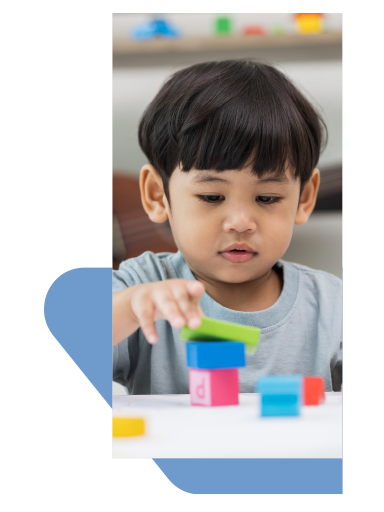ENABLER 4:
SUPPORTING STUDENT SUCCESS SOCIALLY & EMOTIONALLY

Expand community schools and provide professional learning for community school coordinators and staff rooted in the Collective Impact framework to provide effective wraparound services that meet the needs of students and the community.
Enhance Tier 1 school-based mental health promotion services and supports to foster positive, social-emotional and behavioral skills for all students. Tier 1 activities are implemented school-wide, at the grade level, and/or at the classroom level, and services are delivered by both school- and community-based professionals working within schools (e.g. school-wide mental health literacy; school climate improvement efforts; restorative practices; classroom-based social emotional learning for students; etc.)
Scale the Maryland School Mental Health Response Program to support local school systems in addressing student and family mental health needs by enriching and enhancing the work of site-based student support services personnel utilizing a consultancy approach.
Utilize results from the Maryland School Survey to spotlight connections between student and educator perceptions of their schools and school achievement and other outcomes, and to drive school level practices for improvement of student outcomes.
Expand community schools and provide professional learning for community school coordinators and staff rooted in the Collective Impact framework to provide effective wraparound services that meet the needs of students and the community.
Enhance Tier 1 school-based mental health promotion services and supports to foster positive, social-emotional and behavioral skills for all students. Tier 1 activities are implemented school-wide, at the grade level, and/or at the classroom level, and services are delivered by both school- and community-based professionals working within schools (e.g. school-wide mental health literacy; school climate improvement efforts; restorative practices; classroom-based social emotional learning for students; etc.)
Scale the Maryland School Mental Health Response Program to support local education agencies in addressing student and family mental health needs by enriching and enhancing the work of site-based student support services personnel utilizing a consultancy approach.
Utilize results from the Maryland School Survey to spotlight connections between student and educator perceptions of their schools and school achievement and other outcomes, and to drive school level practices for improvement of student outcomes.
Snapshot of Engagement
Participants reflected on how the pandemic had laid bare long-standing unmet needs and profound deficits in services for students and their families, from food insecurity to uneven access to reliable internet to a chronic shortage of mental health services. The pandemic heightened these needs and created more urgency for finding solutions. Participants called for greater availability of counselors in school buildings and for better education for both parents/guardians and students regarding mental health and emotional wellbeing.
Snapshot of Engagement
Participants reflected on how the pandemic had laid bare long-standing unmet needs and profound deficits in services for students and their families, from food insecurity to uneven access to reliable internet to a chronic shortage of mental health services. The pandemic heightened these needs and created more urgency for finding solutions. Participants called for greater availability of counselors in school buildings and for better education for both parents/guardians and students regarding mental health and emotional wellbeing.
Community Schools
Community schools promote positive, equitable outcomes by providing students and families with the physical and mental health, academic, and extracurricular supports needed to thrive. Community schools serve as hubs that bring families, communities, and partners together to remove barriers to learning by using an asset-based approach aimed to strengthen connections to generate improved student outcomes.
This evidence-based strategy focuses on four pillars: integrated student supports, expanded and enriched learning time and opportunities, family and community engagement, and collaborative leadership and practices.
Under the Blueprint for Maryland’s Future, any school that receives Concentration of Poverty Grants must implement the community school model. Concentration of Poverty Grants provide schools with startup funding and permanent per-pupil dollars to launch and sustain community schools. The grants are formula-based and awarded to schools on an annual basis. As of fiscal year 2023, there are 358 community schools receiving Concentration of Poverty Grants.
Community Schools
Community schools promote positive, equitable outcomes by providing students and families with the physical and mental health, academic, and extracurricular supports needed to thrive. Community schools serve as hubs that bring families, communities, and partners together to remove barriers to learning by using an asset-based approach aimed to strengthen connections to generate improved student outcomes.
This evidence-based strategy focuses on four pillars: integrated student supports, expanded and enriched learning time and opportunities, family and community engagement, and collaborative leadership and practices.
Under the Blueprint for Maryland’s Future, any school that receives Concentration of Poverty Grants must implement the community school model. Concentration of Poverty Grants provide schools with startup funding and permanent per-pupil dollars to launch and sustain community schools. The grants are formula-based and awarded to schools on an annual basis. As of fiscal year 2023, there are 358 community schools receiving Concentration of Poverty Grants.

